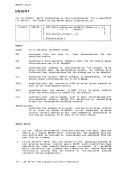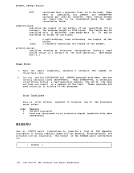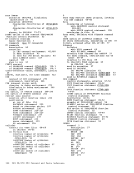2-4
5-16
17-24
25
26-33
34-80
Identifies this as a loader control statement.
Not used.
Blank or entry name (left-justified and padded with
blanks to eight characters)
processed by the
Not used.
length of a specified control section or defines a new control section.
It should be used onlv when
increased in length. The format of an
13.
5-16
17-22
23
24
25-28
30-72
Identifies this as a loader control statement.
ICS --identifies the type of load statement.
Blank.
Control section name
Blank.
(comma)
must not be less than the actual length of the previously
specified control section. It must be right-justified in
columns with unused leading columns filled with zeros.
Blank.
section 2.






















































































































































































































































































































































































































